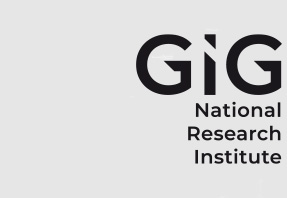Author ORCID Identifier
Isabelle Contrucci: 0000-0003-1695-328X
Dalija Namjesnik: 0000-0001-8778-2639
Peter Niemz: 0000-0002-0612-662X
Paloma Primo: 0009-0003-6059-7793
Andrzej Kotyrba: 0000-0003-4542-3114
Grzegorz Mutke: 0000-0001-8181-0758
Petr Konicek: 0000-0003-2852-8619
Pascal Dominique: 0000-0002-5519-6771
Tobias Rudolph: 0000-0003-0113-453X
Stefan Möllerherm: 0000-0002-0610-659X
Jannes Kinscher: 0000-0003-4893-645X
Emmanuelle Klein: 0000-0002-5666-7643
Simone Cesca: 0000-0001-9419-3904
Abstract
Following the Paris Agreement adopted in 2015, Europe has committed to reducing its greenhouse gas emissions. In this context, the abandonment of coal as an energy source, both in terms of consumption and production, will lead to the closure of many mines in the years to come.
Mine closure guidelines to manage residual mining risks already exist in European countries. However, they do not include post-mining seismic risk management due to a lack of sufficient studies and knowledge on this subject. After mining closure, the flooding of the mining works leads to hydromechanical loading of the underground and, in the longer term, to diffusion and an increase in the pore pressure. These conditions can lead, in certain situations, to the reactivation of tectonic faults, which may cause seismic events strong enough to be felt on the surface or even produce damage. Events of lower magnitudes, usually attributed to the remobilization of old mining works, are referred to as post-mining seismic hazards.
The European RFCS PostMinQuake project, which started in 2020, aims to study this hazard at five mining basins located in France, Germany, Poland and the Czech Republic, known to have experienced significant seismicity during their operation. This analysis, based on the feedback of the partners of the project, aims to frame an inventory of the five studied mining basins, which all encounter post-mining seismicity problem today. Three basins out of five show events with local magnitudes of the order of 3 to 3.5, which took place between nine and thirteen years after the closure of the mines. Even though the magnitudes of these earthquakes are small to moderate, they are felt on the surface as they occur at shallow depths.
In all of the considered countries, a national seismological network exists, however, none of them is fully dedicated to post-mining seismic monitoring. These networks generally consist of a sparse mesh of stations, which does not allow the detection of events of magnitude less than 1 and the location of events have high spatial uncertainties. France is not an exception, but it relies on microseismic monitoring to detect early signs of instability at the level of mining structures and to anticipate the possible appearance of surface disorders. Out of the five basins that are studied, the Gardanne basin, which has been monitored since 2008, is the most documented case study of post-mining seismicity. This article also shows the difficulty in identifying the key conditions and factors that can lead to the remobilization of faults.
Recommended Citation
Contrucci, Isabelle; Namjesnik, Dalija; Niemz, Peter; Primo, Paloma; Kotyrba, Andrzej; Mutke, Grzegorz; Konicek, Petr; Dominique, Pascal; Rudolph, Tobias; Möllerherm, Stefan; Kinscher, Jannes; Klein, Emmanuelle; and Cesca, Simone
(2023)
"European feedback on post-mining seismicity,"
Journal of Sustainable Mining: Vol. 22
:
Iss.
3
, Article 3.
Available at: https://doi.org/10.46873/2300-3960.1385
Creative Commons License

This work is licensed under a Creative Commons Attribution-Noncommercial-No Derivative Works 4.0 License.

